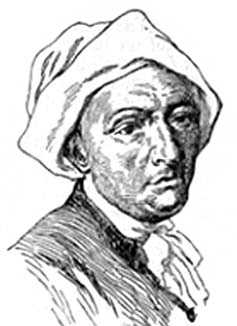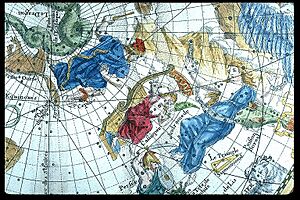Philippe de La Hire facts for kids
Quick facts for kids
Philippe de La Hire
|
|
|---|---|

Philippe de La Hire
|
|
| Born | 18 March 1640 |
| Died | April 21, 1718 (aged 78) |
| Nationality | French |
| Scientific career | |
| Fields | Mathematics, astronomy, architecture |
Philippe de La Hire (born March 18, 1640 – died April 21, 1718) was a very talented French scientist. He was a skilled painter, mathematician, astronomer, and architect. People said he was like a "one-man academy" because he knew so much!
Contents
Early Life and Artistic Talent
Philippe de La Hire was born in Paris, France. His father, Laurent de La Hire, was a famous artist. In 1660, Philippe traveled to Venice, Italy, for four years to study painting.
When he returned to Paris, he learned about geometrical perspective from Girard Desargues. This is a way to make drawings look three-dimensional. On August 4, 1670, he became a master painter. Sometimes, his paintings are confused with those of his son, Jean Nicolas de La Hire, who was also a painter.
A Mind for Science
Philippe de La Hire also started to study science. He was very good at mathematics. He learned from a French Jesuit named Honoré Fabri.
He joined a group of brilliant thinkers, including Giovanni Domenico Cassini and Christiaan Huygens. In 1678, he became a member of the French Academy of Sciences.
Contributions to Astronomy
As an astronomer, La Hire created tables to track the movements of the Sun, Moon, and planets. He also helped design tools for aiming large aerial telescopes.
From 1679 to 1682, he explored and measured parts of the French coastline. In 1683, he helped map France by extending the Paris meridian north. This was important for creating accurate maps.
Teaching and Architecture
In 1683, La Hire became a professor of mathematics at the Collège Royal. From 1687 onwards, he also taught at the Académie d’architecture. This shows his wide range of skills.
Important Writings
La Hire wrote many books and papers on different scientific topics.
- In 1673, he wrote about drawing methods.
- In 1685, he published a book on conic sections. These are shapes like circles, ellipses, parabolas, and hyperbolas.
- He also wrote about special curves called epicycloids (1694) and roulettes (1702).
- In 1708, he wrote about conchoids, another type of curve.
His work on conic sections and epicycloids was based on the ideas of his teacher, Desargues. La Hire also translated an essay about magic squares and collected many known facts about them. This was published in 1705. He also published a set of astronomical tables in 1702.
La Hire's studies also included animals, how we breathe, and how our eyes see.
Understanding Friction
On December 19, 1699, Philippe de La Hire presented his ideas about how things rub against each other. He shared his "Experiments and observations on bodies that slide against each other" at the French Academy of Sciences. His ideas are now known as Amontons’ laws of friction, named after Guillaume Amontons.
Family and Legacy
Two of Philippe de La Hire's sons also became famous scientists:
- Gabriel-Philippe de La Hire (1677–1719) was a mathematician.
- Jean-Nicolas de La Hire (1685–1727) was a botanist, someone who studies plants.
A mountain on the Moon, called Mons La Hire, is named after him.
Selected Works
Here are some of Philippe de La Hire's important works:
- Nouvelle méthode en géométrie pour les sections des superficies coniques et cylindriques (1673) – A new way to understand shapes made by cutting cones and cylinders.
- La gnomonique ou l'Art de faire des cadrans au soleil (1682) – About making sundials.
- Sectiones conicæ (1685) – His book on conic sections.
- Tables du Soleil et de la Lune (1687) – Tables showing the movements of the Sun and Moon.
- Traité de mecanique: ou l'on explique tout ce qui est nécessaire dans la pratique des arts, & les propriétés des corps pesants lesquelles ont un plus grand usage dans la physique (1695) – A book about mechanics and the properties of heavy objects.
- Planisphère céleste (1705) – A celestial map.
- Tabulæ astronomicæ Ludovici Magni iussu et munificentia exaratæ et in lucem editæ (1727) – Astronomical tables.
See also
 In Spanish: Philippe de la Hire para niños
In Spanish: Philippe de la Hire para niños


